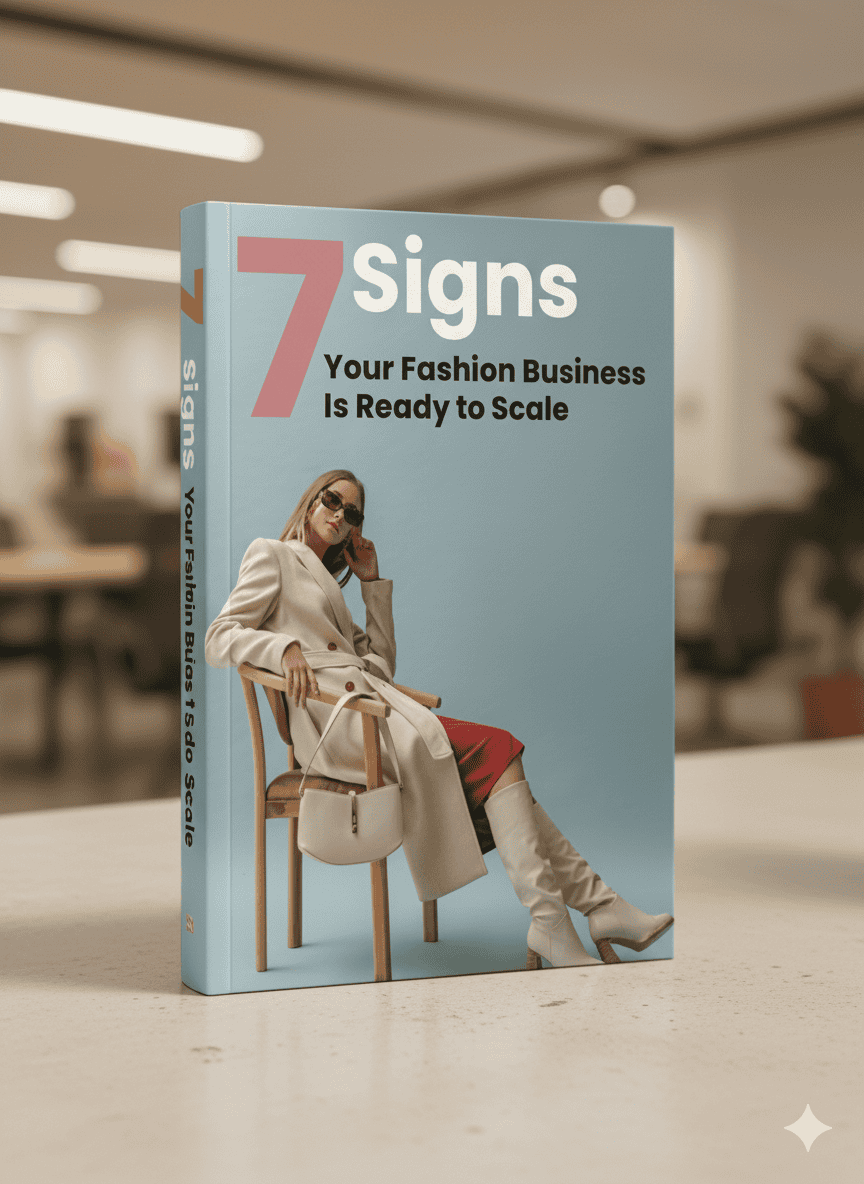So, you’ve decided to start a fashion line, but there’s one small catch—you don’t have design experience. Don’t worry! Many successful fashion brands have been created by people who aren’t formally trained designers. What you lack in technical skills, you can make up for with creativity, a clear vision, and the right team. This blog will walk you through the step-by-step process of bringing your designs to life, even if you’ve never sketched a garment or sewn a seam.
From outsourcing design work to sourcing fabrics and working with sample makers, we’ll cover everything you need to know to get started on the right foot.
1. Outsourcing Design Work: Bringing Your Vision to Life
The key to starting a fashion line without design experience is knowing how to communicate your vision clearly and then outsourcing the technical design work. Here’s how you can go about it:
a) Hiring a Freelance Fashion Designer
Even though you’re not a designer, you likely have a clear idea of what your fashion line should look like. Maybe you have mood boards, reference images, or an aesthetic in mind. The next step is to hire a freelance fashion designer to bring these ideas to life.
- Where to find designers: Platforms like Upwork, Fiverr, Behance, and even LinkedIn are great places to find freelance designers. Be sure to look at their portfolios to ensure their style matches your vision.
- Communicate your vision: Share your mood boards, style inspirations, and brand aesthetic with the designer. The clearer you are about your vision, the more closely they’ll be able to create something that aligns with your brand.
- Design scope: Work with your designer to create sketches, technical drawings (called flats), and a tech pack for each garment. A tech pack is a document that includes detailed specifications of the garment, such as measurements, fabric type, trims, stitching, and other technical aspects required by the manufacturer.
b) Working with Pattern Makers
Once your designs are ready, a pattern maker is the professional who will turn your designer’s sketches into actual, workable patterns. These patterns will then be used to cut fabric for your samples and production.
- Finding pattern makers: Like designers, you can find pattern makers on platforms like Sewport, Maker’s Row, and even through freelance sites.
- What to expect: Pattern makers will create a technical pattern for each design, which will specify how the fabric should be cut and sewn. This step is critical to ensure your garments fit and look as intended.
2. Choosing Components: Fabric, Trims, and Materials
The materials you choose for your fashion line will make or break the quality and feel of your garments. Here’s how to choose the right fabrics, trims, and materials:
a) Researching and Sourcing Fabrics
Without design experience, it’s essential to learn about different types of fabrics and their properties. The type of fabric you choose will affect the look, feel, and durability of your garments.
- Types of fabrics: Understand the difference between natural fabrics (like cotton, linen, silk) and synthetics (like polyester, rayon, nylon). Each fabric behaves differently in terms of drape, breathability, and comfort.
- Sustainable options: If sustainability is part of your brand’s mission, look into eco-friendly fabrics such as organic cotton, Tencel, recycled polyester, and hemp.
- Where to source fabrics: Trade shows like Première Vision or Texworld USA are great places to find fabric suppliers. Alternatively, platforms like Alibaba, Fabric.com, and Spoonflower can be good sources for smaller orders.
b) Choosing Trims and Notions
Trims and notions (such as zippers, buttons, snaps, and threads) are just as important as the fabric itself. They can add unique design elements to your garments or play a functional role.
- Sourcing trims: Many fabric suppliers also offer trims, but you can find specialized suppliers through directories like Mood Fabrics or Pacific Trimming. Make sure to match your trims with the fabric’s aesthetic and functionality.
Tip: Always order fabric and trim swatches before committing to larger orders. This helps ensure the quality and appearance meet your expectations.
3. Researching Fashion Design Trends
Even without design experience, staying on top of fashion trends is crucial. Trends influence everything from colors to silhouettes, and being aware of them helps ensure your collection resonates with your target market.
a) Trend Forecasting Services
Many successful fashion brands use trend forecasting services to predict upcoming trends. Companies like WGSN, Pantone, and Trendstop offer reports that highlight the trends in fabric, color, and design that will dominate the upcoming seasons. While some of these services require a subscription, they’re a great way to stay ahead of the curve.
b) Fashion Weeks and Runway Shows
Keeping up with major fashion weeks (New York, Paris, Milan, and London) is another way to see what’s trending. Even if your brand isn’t high fashion, you can get inspiration for colors, fabrics, and styles that trickle down to mainstream markets.
c) Social Media and Street Style
Social media platforms like Instagram, Pinterest, and TikTok are gold mines for trend inspiration. Street style blogs, fashion influencers, and style editors often showcase emerging trends that you can incorporate into your designs.
Tip: While it’s important to follow trends, don’t forget to stay true to your brand’s unique vision. Use trends to inspire your designs but avoid blindly following them.
4. Create a Line Plan First
Creating a Line Plan: The Blueprint for Your Fashion Collection
A line plan is an essential step in starting a fashion line, even more so when you’re new to the industry. It serves as a roadmap that details everything about your collection—from the styles you’ll produce to production quantities and cost breakdowns. Creating this plan ensures your collection is cohesive, well-balanced, and aligned with your business strategy. It helps you stay organized and provides a clear vision before you move into sampling and production.
1. Define Your Core Pieces
Before moving forward with sampling, it’s essential to define the core pieces in your collection. These are the foundation of your fashion line and the items that represent your brand’s identity. Start by determining how many pieces you want to include in your first collection.
For new brands, it’s smart to begin with a capsule collection—a smaller, curated selection of 5 to 10 items. This approach allows you to focus on quality, gain traction, and test the market without overwhelming yourself with a large product line.
Core pieces: These are the hero products that define your collection. If, for example, you’re creating an athleisure brand, your core pieces might be leggings, sports bras, and performance tops. These items should align closely with your brand’s unique value proposition and target audience.
Supporting pieces: In addition to your core items, consider adding a few supporting pieces to round out your collection. These could include accessories or layering garments that complement your core items, giving your customers more versatility and helping you cross-sell. This is where you can add some editorial pieces. Editorial fashion is all about creating bold, eye-catching pieces specifically designed to generate buzz, capture attention, and get press coverage for a brand. These items are crafted to be visually stunning and often push the boundaries of conventional fashion, making them perfect for high-profile fashion editorials, magazine spreads, and runway shows.
2. Plan Your Production Quantities
Once you’ve identified your core and supporting pieces, the next step in your line plan is to estimate production quantities. Deciding how many units to produce for each style is a delicate balance. You want to produce enough to meet demand but not so much that you’re stuck with unsold inventory.
- Start small: If this is your first collection, start with smaller production runs to test the market. You can always produce more once you have a clearer idea of what your customers respond to.
- Analyze market demand: Consider your target market’s buying behaviors, your price point, and your marketing reach. Are you catering to a niche, or is your product appealing to a broader audience? Understanding your target market’s size and purchasing power can help you gauge production numbers.
- Pre-orders: One great way to manage production quantities without risking excess inventory is by offering pre-orders. This allows you to gauge real customer interest before placing your production orders, minimizing risk and avoiding overproduction.
3. Cost Breakdown and Pricing
Next, you need to define the cost structure for each item in your collection. This includes the cost of materials, labor, shipping, and any other associated production expenses.
- Material costs: Calculate the price of the fabrics, trims, and components you’re using. If you’re working with sustainable or high-end materials, your costs may be higher, and this will affect your pricing strategy.
- Labor and manufacturing costs: Factor in the cost of pattern-making, sampling, and manufacturing. If you’re working with a small production run, these costs will likely be higher per unit.
- Pricing strategy: After determining the total production cost per unit, decide on your pricing. A common strategy is to price products at 2.5x to 3x the production cost to cover overhead and generate profit. Make sure your pricing is competitive within your target market, but don’t undervalue your brand.
By following these steps and building a well-thought-out line plan, you’ll have a clear understanding of the scope of your collection, your financials, and your production needs before moving forward with sampling and manufacturing.
4. Sampling: Making the First Version of Your Design
Before going into full production, you’ll need to create samples—the first physical versions of your garments. This step is crucial for testing fit, quality, and overall design.
a) Working with Sample Makers
A sample maker will take the pattern and tech pack created by your designer and turn it into a tangible garment. This process allows you to see how the design translates from paper to reality, and it gives you a chance to make adjustments.
- Finding sample makers: Websites like Sewport, and Fashion Index connect entrepreneurs with sample makers who specialize in small-batch production. Always ask for previous work samples to ensure they can deliver quality work.
- Creating multiple samples: Typically, you’ll need to create several rounds of samples. The first sample is often a rough prototype, and you’ll make revisions to perfect the design before moving into production.
b) Evaluating the Samples
Once you receive the samples, evaluate them for:
- Fit and functionality: Does the garment fit as intended? Are there any construction issues?
- Fabric performance: Does the fabric behave as expected (drape, comfort, etc.)?
- Design aesthetic: Does the garment reflect your brand’s style and vision?
Final Thoughts
Creating a fashion line without design experience is absolutely achievable if you follow a structured approach and work with the right people



